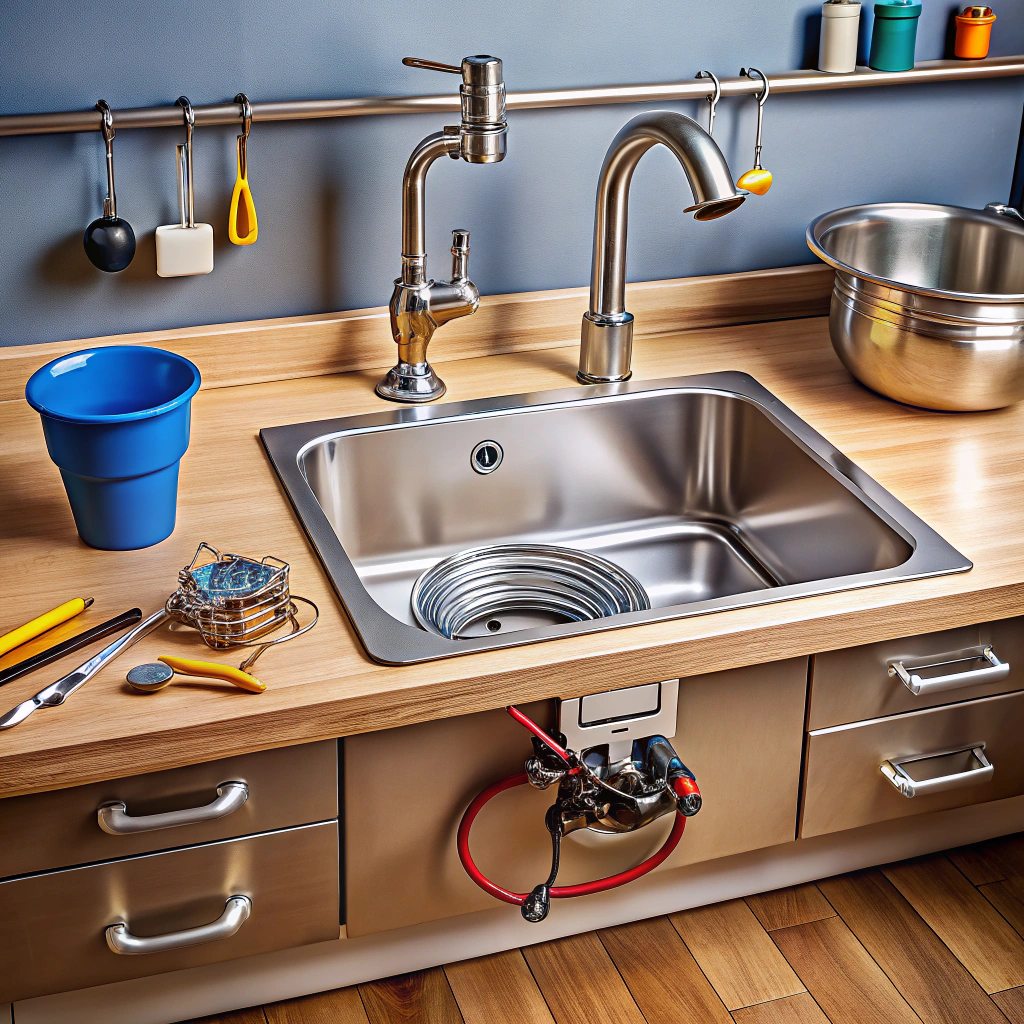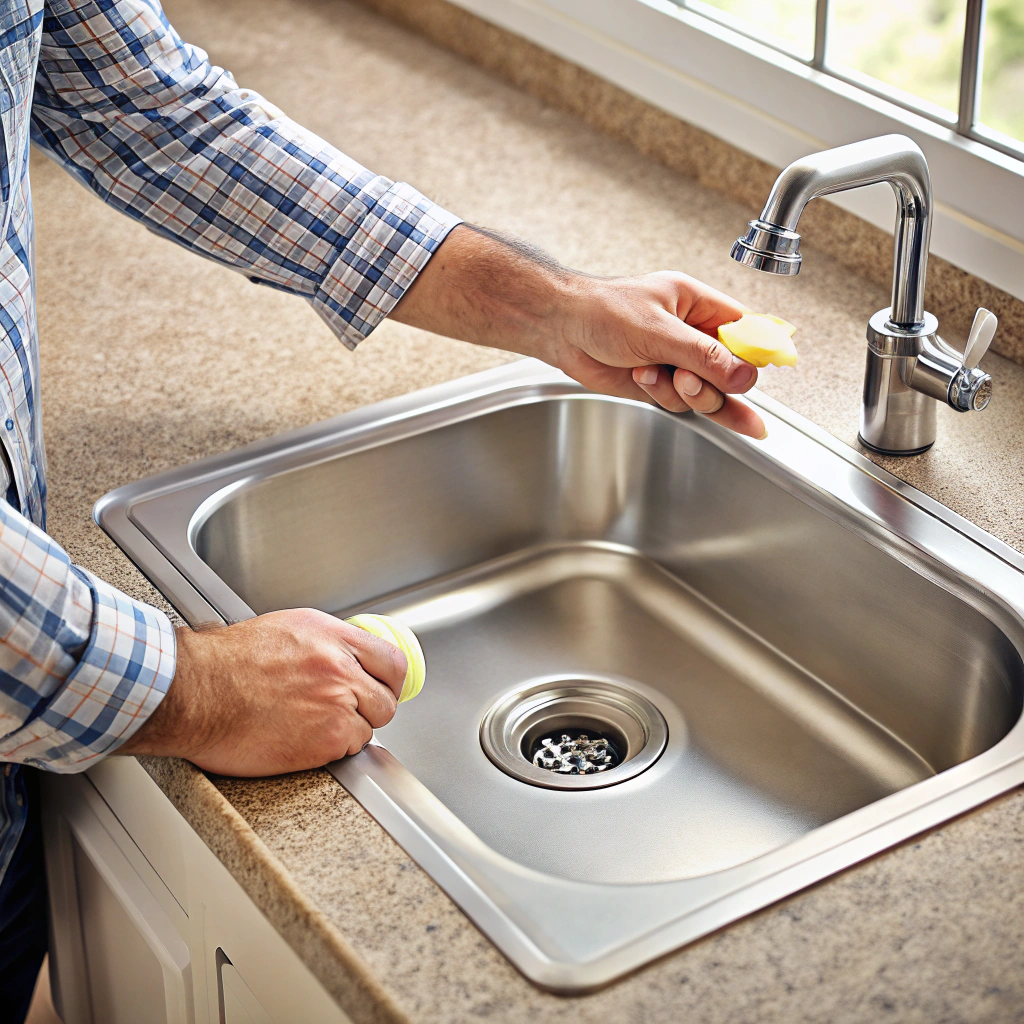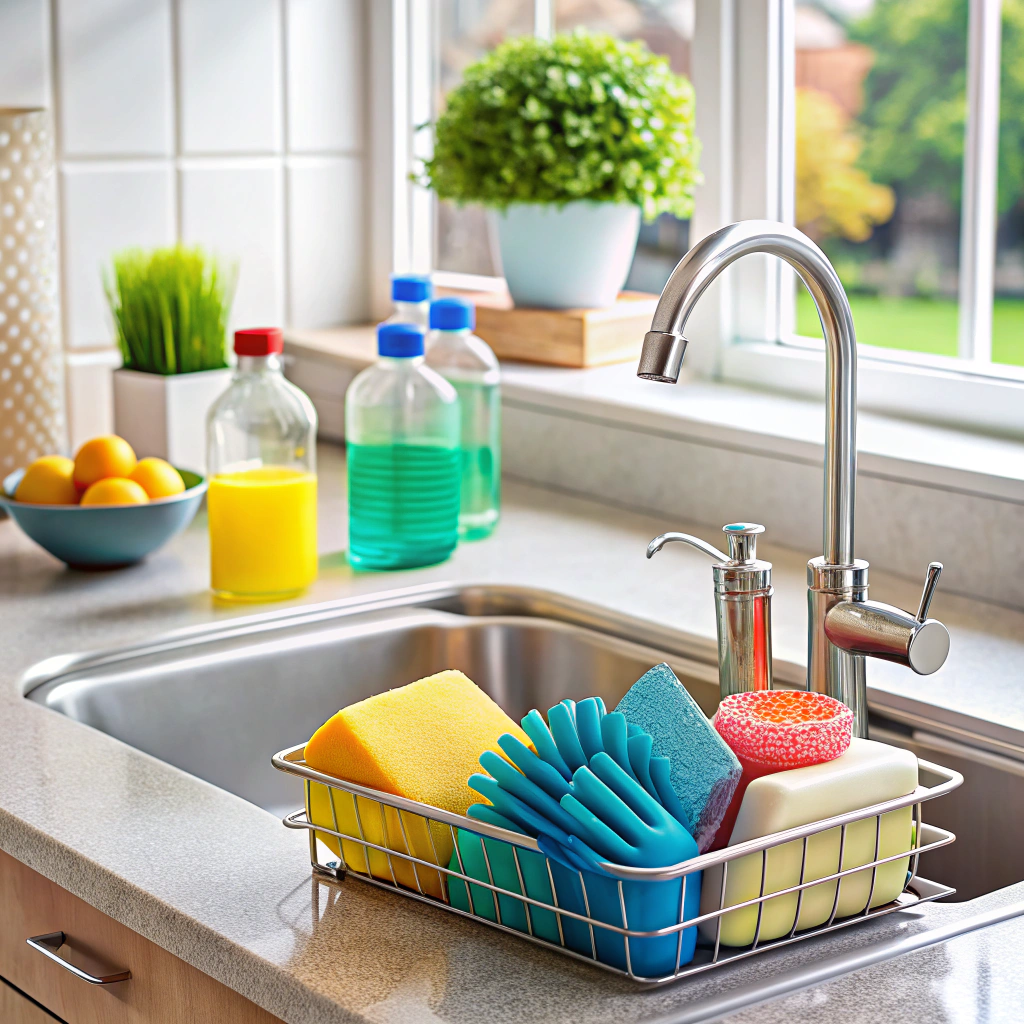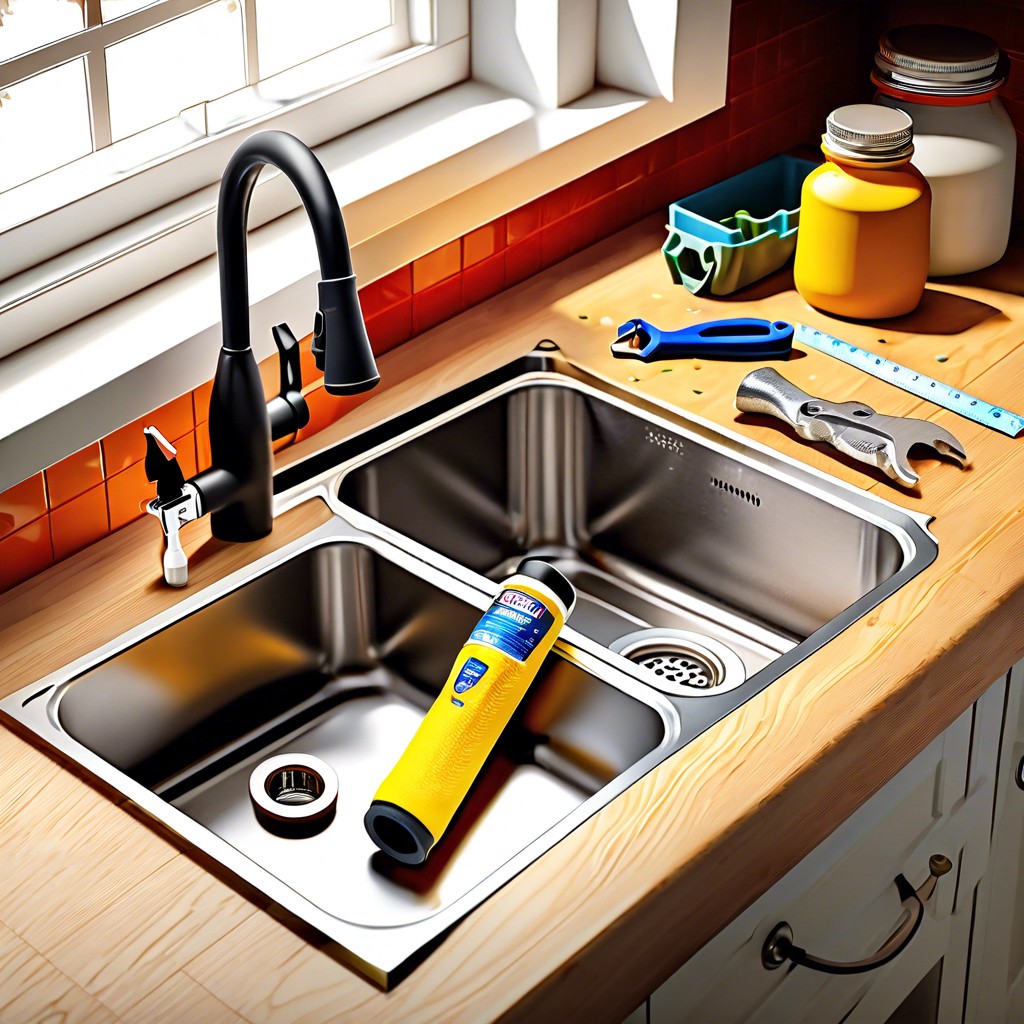Last updated on
Learn how to tighten a loose sink faucet in a few easy steps and keep your kitchen or bathroom neat and leak-free.
Got a wobbly sink faucet that’s driving you nuts? Good news: you’re just a few steps away from a rock-solid fix. With the right tools and a bit of elbow grease, you’ll banish that pesky wobble for good. Read on for a foolproof guide that covers everything from clearing out that cluttered cabinet to testing your brilliantly tightened faucet. Game on, faucet.
Key takeaways:
- Basin wrench is your plumbing best friend.
- Clear sink cabinet for easy faucet access.
- Shut off water supply before fixing faucet.
- Use a basin wrench for tightening faucet nut.
- Test faucet after tightening to ensure stability.
What's Inside
Tools Required
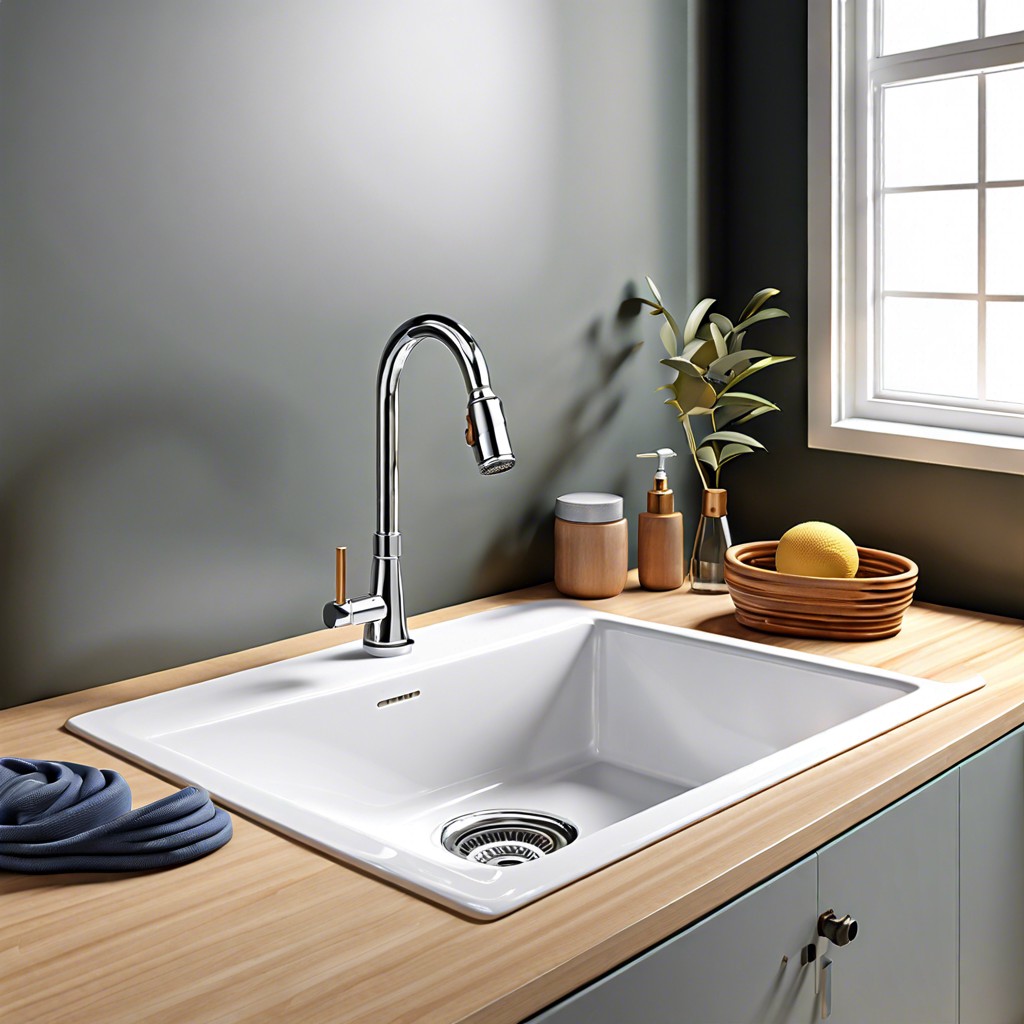
Okay, gear up folks! Let’s talk tools. First up, you’ll need a trusty basin wrench. It’s like the Swiss Army knife for plumbers, designed to reach those awkward spots under the sink.
Next, grab an adjustable wrench, just in case the faucet nuts are trickier than a Rubik’s Cube.
A flashlight is a must-have. It’s like trying to find a needle in a haystack without one.
Lastly, some plumber’s tape can come in handy if connections need a bit of extra sealing.
Gather these up, and you’ll be ready to dive under the sink like a plumbing pro!
Clear Out the Sink Cabinet
It’s time to dive into the underworld of your sink cabinet. Before we embark on a wrench-wielding adventure, give yourself some space to work.
First, remove any cleaning supplies, pots, or whatever else you’ve been hiding down there. Seriously, you might find that rubber glove you lost last month.
Next, set them aside in a neat pile to avoid turning your kitchen into an obstacle course.
While you’re at it, give the area a quick wipe. You don’t need dust bunnies judging your plumbing skills.
With a clear space, you’ll have a much easier time locating the faucet connections and maneuvering tools down there.
Plus, it’s a chance to do a tiny bit of tidying up. Win-win!
Shut Off Water Supply
Righty-tighty, lefty-loosey! Remember that classic rhyme because you’ll need it here. Locate the water shut-off valves under the sink. They are usually small, round handles attached to the incoming water pipes.
Turn them clockwise to shut off the water. No one wants an unexpected surprise splash while tinkering away. If individual valves aren’t doing the trick, you might need to shut off the main water supply for the house.
Once you’ve turned off the valves, open the faucet to drain any remaining water. This simple step ensures you won’t have a minor flood on your hands. Plus, it’s oddly satisfying to watch that last bit of water drip away, knowing you’re in total control!
Locate the Faucet Nut
Alright, this is where you might want to channel your inner detective! To find the elusive faucet nut, crawl under the sink and get comfy–or at least as comfy as one can get lying on a hard kitchen floor. You’ll be looking for a metal or plastic nut that attaches the faucet to the sink.
Here’s what to keep in mind:
- Flashlight Friend:
- A good flashlight will be your best friend here. Shine it up behind the basin for a clear view.
- Avoid the Look-Alikes:
- Don’t confuse the faucet nut with the water supply line nuts. The faucet nut is typically larger and higher up.
- Get Close:
- If you have a double sink, it’s usually centered between the basins. You might need to squish closer to the back wall.
Remember, patience is key. Happy hunting!
Use a Basin Wrench
Now, here comes the fun part. Let’s grab that basin wrench. It’s like a magic wand for your plumbing needs, only less magical and more wrench-y.
First, extend the handle if needed. This tool is specially designed to reach those tight, awkward spots under the sink.
Next, position the wrench around the faucet nut. It has jaws that grip the nut securely. It’s kind of like giving the nut a firm handshake.
Once the wrench is in place, turn it clockwise to tighten the nut. Righty-tighty! Sometimes, you might feel like you’re twisting forever. Don’t give up. You got this.
Check for Other Loose Connections
Once you’ve tightened the main faucet nut, it’s worth giving the surrounding area a quick check. You never know what else might be playing the loose-and-wiggly game.
First, inspect the connections to the water supply lines. These love to sneakily loosen over time.
Check the mounting hardware that holds the sink sprayer (if you have one) securely. Loose sprayer mounts can lead to annoying leaks.
Lastly, give the handles a firm jiggle. If they wobble like they’re at a dance party, they might need a little tightening too.
A comprehensive check saves you from future headaches and ensures everything stays snug and secure. Plus, it’s a great excuse to feel like a DIY hero.
Tighten the Faucet Nut
Here’s where the magic happens. Grab that basin wrench like it’s Thor’s hammer and get ready to tighten things up.
First, position the wrench around the faucet nut. It’s usually located at the base of the faucet, underneath the sink. If you’re wondering what a faucet nut looks like, think of it as the giant screw that’s plotting to make your life difficult.
Turn the wrench clockwise. Righty-tighty, lefty-loosey—remember that old chestnut? You might have to contort like a circus acrobat to reach it, but hey, there’s a reason plumbers have the most interesting workout routines.
Don’t force it like you’re in an arm-wrestling contest. Gentle but firm pressure is key here. Over-tightening could lead to cracks, and nobody wants a fountain in their kitchen—at least, not that kind.
Lastly, give the faucet a little wiggle. If it doesn’t budge, high-five yourself. You just won the Tighten-the-Faucet Olympics.
Test the Faucet
Turn the water supply back on. We’re not trying to flood the kitchen here, so do it slowly.
Check for leaks. Think of it as playing detective, only with less trench coat and more, “Did I really tighten that enough?”
Test both hot and cold taps. Water should flow smoothly, not like it’s deciding whether it wants to be a fountain or a drip.
Move the faucet in different directions. Tightening shouldn’t just keep the faucet still; it should make it secure all around. If it still wobbles, you might have an encore performance with the basin wrench.
Admire your handiwork, but don’t get too smug. Faucets are humble, and so should we be. At least until the next home improvement battle.
Clean Up and Organize Tools
Alright, victory dance time! You’ve successfully tightened the faucet. Now, it’s time to clean up. Trust me, future you will thank you for this.
First, gather all your tools. Double-check under the sink just in case a wrench decided to go on a mini-vacation.
Give your tools a quick wipe-down. Maintaining them prolongs their life. Plus, nobody wants to grab a grimy screwdriver next time.
Return tools to their designated spots. It keeps your workspace tidy and prevents hunting for lost tools during your next project.
Finally, wipe any water spills or debris around your sink area. Keeping it clean prevents mold and mildew.
Congrats! You’ve earned yourself a cup of coffee or perhaps a celebratory dance around your shiny, tightened faucet. Happy tinkering.

